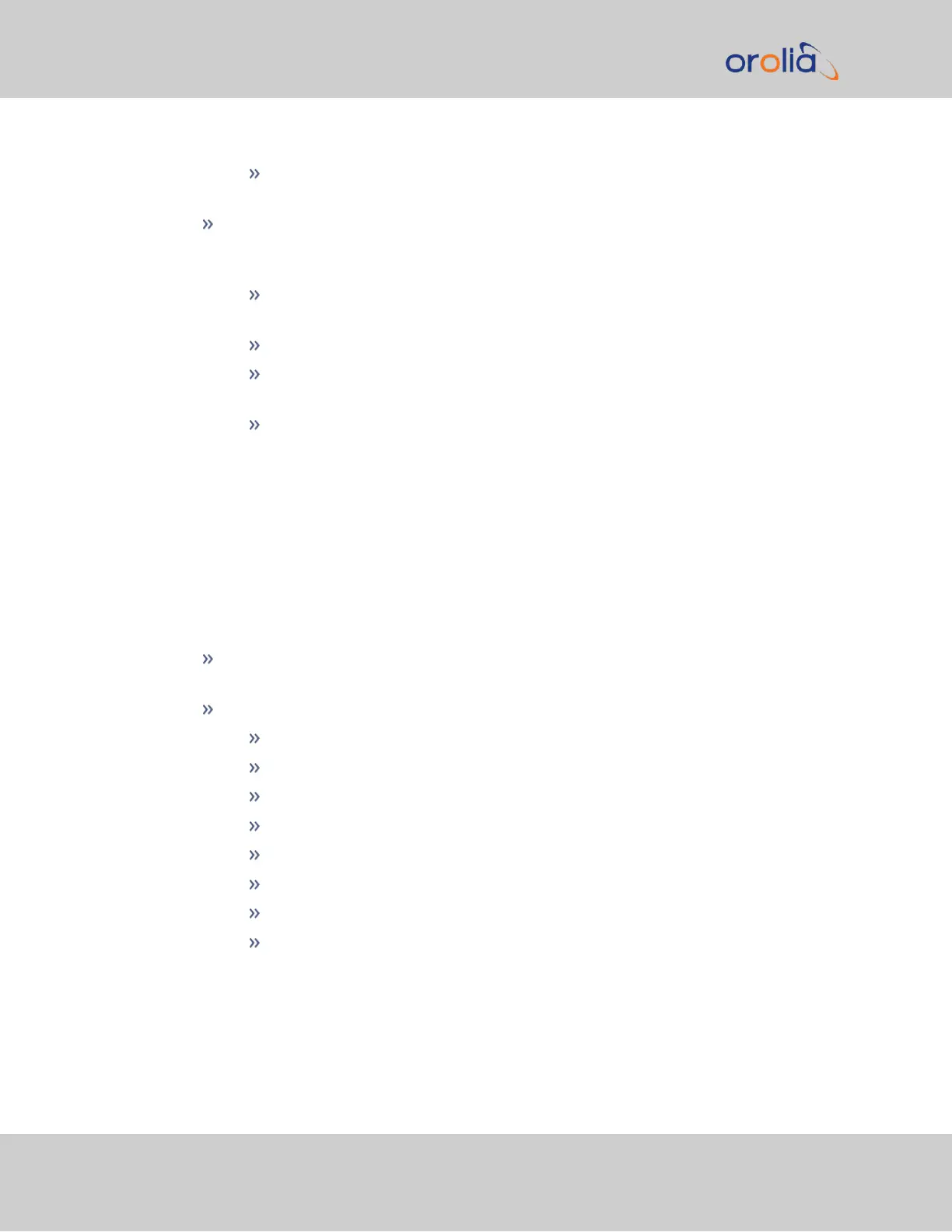Disabled: The second STANAG signal (TOD 2) can be used to send an inde-
pendent TOD.
Timescale: Indicates the time base for the incoming time code data. The entered
Timescale is used by the system to convert the time in the incoming data stream to
UTC time for use by the System Time. The available choices are:
UTC—Coordinated Universal Time ("temps universel coordonné"), also
referred to as ZULU time
TAI—Temps Atomique International
GPS—The raw GPS time as transmitted by the GNSS satellites (as of 15-
February-2021, this is 18 seconds ahead of UTC time).
A local clock set up through the Time Management Page—Refer to "The
Time Management Screen" on page166 for more information on how to con-
figure and read the System Time. Local timescale allows a Local Clock to
apply a time offset for Time Zone and DST correction.
The incoming input time information may be provided as local time, but System Time may
be configured as UTC time, so internal computations need to be performed. With the
Timescale field set to “Local”, select the name of a previously created Local Clock. The
Time Zone and DST rules, as configured in the Local Clock will be applied to the front
panel time display. Refer to for more information on Local Clocks.
For each Time of Day the following settings are displayed:
Signature Control: Indicates when the signal is present. This function allows the
modulation to stop under certain conditions, see "Signature Control" on page161.
TOD Format: The user-selectable format being used. Available formats include:
STANAG 4246 HQI
STANAG 4246 HQII
STANAG 4372 HQIIA
STANAG 4430 STM
STANAG 4430 XHQ
ICD-GPS-060A BCD
ICD-GPS-060A HQ
DOD-STD-1399 BCD
424 SecureSync 2400 User Manual
APPENDIX
